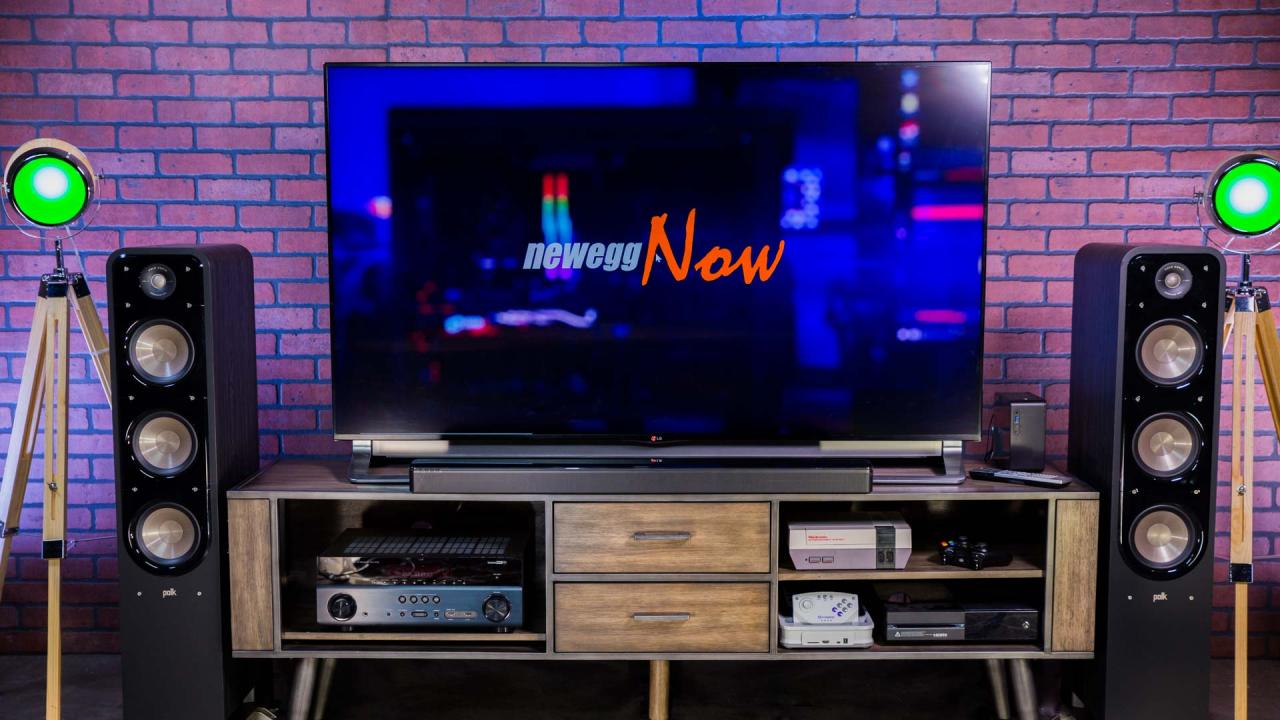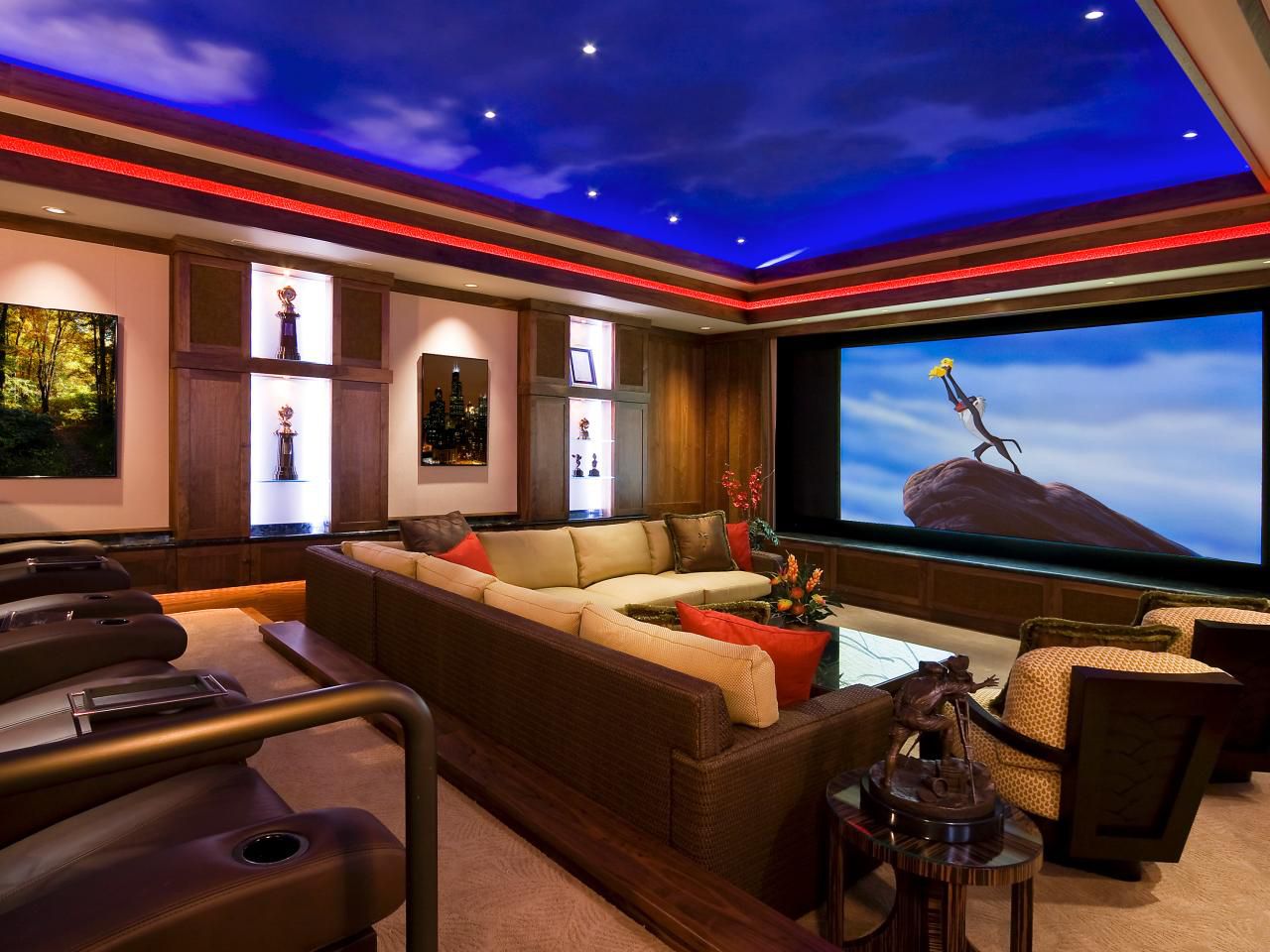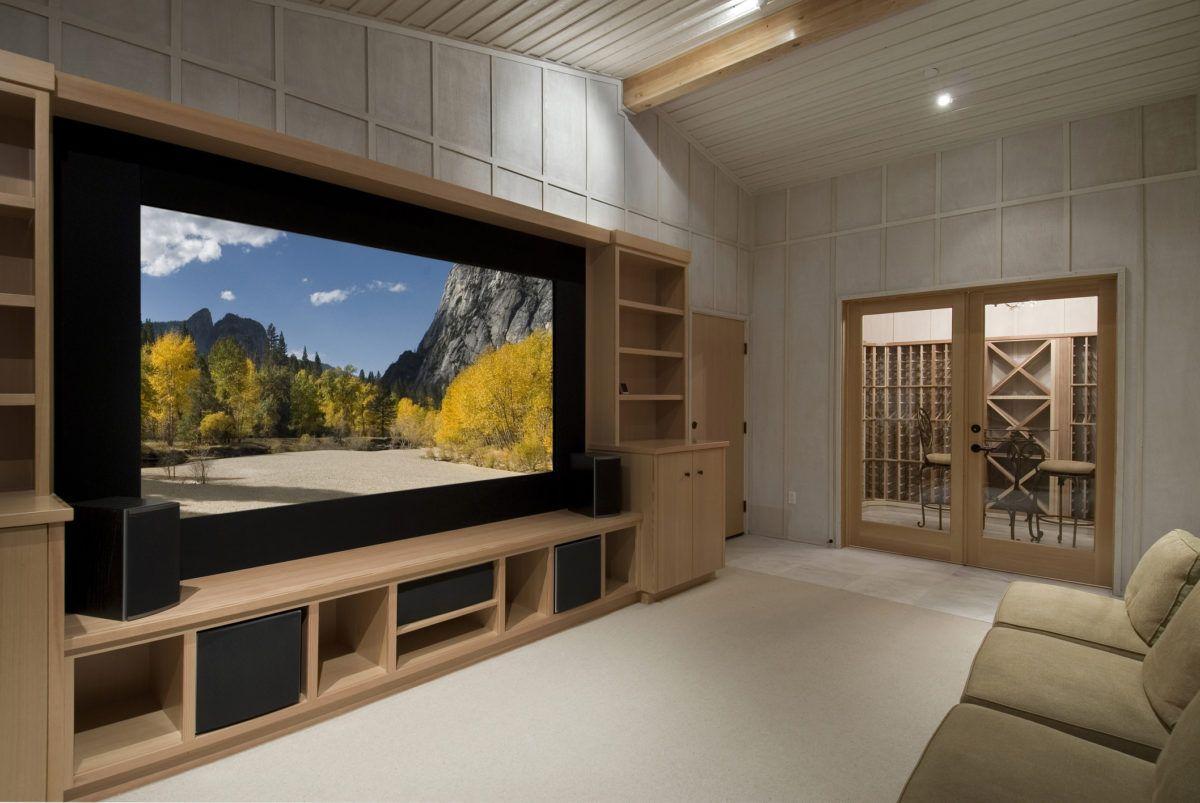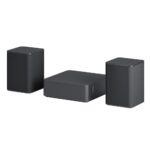Embark on a journey through 10 Home Theater TV Setups for a True Cinema Feel, where the magic of cinema comes alive in the comfort of your own home. From screen size to seating arrangements, discover the essential elements that transform your living room into a cinematic paradise.
Explore the intricacies of choosing the right TV, optimizing sound, concealing cables, and integrating smart home devices to create an immersive cinematic experience that rivals a trip to the movies.
Setups for a True Cinema Feel

Creating a home theater setup that mimics a true cinema experience requires careful consideration of various key elements to ensure an immersive and high-quality viewing experience.Screen Size, Resolution, and Aspect Ratio:The screen size of your TV or projector plays a crucial role in replicating the cinematic feel. Opting for a larger screen size can enhance the viewing experience by providing a more expansive and engaging display.
Do not overlook the opportunity to discover more about the subject of 5 Reasons to Visit Seven Angels Theatre in Waterbury.
Additionally, choosing a high-resolution display, such as 4K or even 8K, ensures sharp and detailed images that closely resemble what you would see in a movie theater. Aspect ratio is another important factor to consider, with 16:9 being the standard for most cinematic content.Audio Systems for Immersive Experience:To truly immerse yourself in the cinematic experience, investing in a high-quality audio system is essential.
Further details about 10 Best Acting Classes in Waterbury for Beginners is accessible to provide you additional insights.
Soundbars, surround sound systems, or technologies like Dolby Atmos can significantly enhance the audio quality of your home theater setup. These systems create a multi-dimensional sound environment, with sound coming from different directions, making you feel like you are right in the middle of the action. Crisp dialogue, impactful sound effects, and a deep, rumbling bass can all contribute to a true cinema feel in the comfort of your own home.
Choosing the Right TV
When setting up a home theater for a true cinema feel, choosing the right TV is crucial to the overall viewing experience. Factors such as TV type, screen size, and resolution play a significant role in creating an immersive cinematic environment.
TV Types: OLED, QLED, and LED
- OLED TVs: Known for their deep blacks, vibrant colors, and excellent contrast, OLED TVs are ideal for a home theater setup. They offer superior picture quality and wide viewing angles, making them perfect for a cinematic experience.
- QLED TVs: QLED TVs utilize Quantum Dot technology to produce bright and vivid colors. They are great for well-lit rooms and offer high brightness levels, making them suitable for home theaters with ambient lighting.
- LED TVs: LED TVs are more affordable compared to OLED and QLED models. While they may not offer the same level of picture quality, they are still a good option for those on a budget looking to create a home theater setup.
Ideal Screen Size and Viewing Distance
- Screen Size: The ideal screen size for a home theater setup depends on the room dimensions and viewing distance. As a general rule of thumb, the screen should occupy a significant portion of your field of vision without causing eye strain. Measure the distance between your seating area and TV to determine the appropriate screen size.
- Viewing Distance: The viewing distance plays a crucial role in determining the screen size. For a cinematic experience, aim for a viewing distance that allows you to immerse yourself in the content without feeling overwhelmed by the screen size.
Resolution: 4K vs. 8K
- 4K Resolution: 4K TVs offer four times the resolution of Full HD, providing sharp and detailed images. They are a popular choice for home theaters as they deliver a high-quality viewing experience suitable for most content.
- 8K Resolution: 8K TVs take image clarity to the next level with four times the resolution of 4K. While there is limited 8K content available, these TVs are a future-proof option for those looking to invest in cutting-edge technology for their home theater setup.
Mounting and Positioning

When setting up a home theater system, proper mounting and positioning of the TV are crucial to achieving the best viewing and audio experience.
Optimal Mounting Height and Angle
Mounting your TV at eye level when seated is ideal for the most comfortable viewing experience. This typically means the center of the screen should be at eye level when sitting down. Additionally, angling the TV slightly downwards can help reduce neck strain during extended viewing sessions.
Avoiding Glare and Reflections
To ensure the best image quality, it’s important to avoid glare and reflections on the TV screen. Position the TV away from windows or light sources that could cause reflections. Using curtains or blinds to control natural light can also help minimize glare.
Positioning Speakers for Optimal Audio
For the best audio distribution in your home theater space, consider placing speakers strategically around the room. Front speakers should be placed at ear level when seated, while surround speakers can be mounted higher up and angled towards the viewing area. Subwoofers are best placed in corners or along walls for balanced bass distribution.
Ambient Lighting and Color Scheme: 10 Home Theater TV Setups For A True Cinema Feel
Creating the right ambiance in a home theater is essential to enhance the overall viewing experience. Ambient lighting and choosing the right color scheme play a crucial role in setting the mood and ensuring a true cinematic feel in your home theater.
Bias Lighting for Eye Strain and Contrast Enhancement
When it comes to ambient lighting, using bias lighting behind the TV can make a significant difference. Bias lighting is a soft light placed behind the television to reduce eye strain and improve contrast. By creating a gentle glow around the screen, bias lighting helps to reduce the harsh contrast between the bright TV screen and the surrounding dark room, making it easier on the eyes during extended viewing sessions.
Choosing a Complementary Color Scheme
When selecting a color scheme for your home theater, it is important to choose colors that complement the cinematic feel of the room. Opt for dark, rich colors like deep reds, blues, or purples for the walls to create a cozy and immersive atmosphere. Consider adding subtle accent lighting in warm tones to enhance the overall ambiance and add a touch of sophistication to the space.
Remember that the goal is to create a space that feels like a true cinema experience, so choose colors that evoke that feeling.
Seating Arrangement and Comfort
Comfortable seating is essential for creating an immersive and enjoyable home theater experience. Not only does it enhance the overall viewing experience, but it also ensures that you can relax and fully enjoy your favorite movies in the comfort of your own home.When arranging seating in your home theater, it’s important to consider the optimal viewing angles for all viewers.
The main seating area should be directly facing the TV screen, with no awkward angles that may strain the neck or eyes. Additionally, consider the distance between the seats and the screen to avoid any discomfort or eyestrain.Adding accessories like recliners, cup holders, and blankets can further enhance the comfort of your home theater setup. Recliners allow you to kick back and relax during long movie marathons, while cup holders ensure that you can enjoy your favorite drink without any spills.
Blankets can also be a cozy addition, especially during colder months, making your movie night even more comfortable and enjoyable.
Benefits of Comfortable Seating
- Enhances overall viewing experience
- Reduces strain on the neck and eyes
- Allows for relaxation and enjoyment of movies
Cable Management and Concealment
When setting up a home theater for a true cinema feel, it’s essential to pay attention to cable management and concealment. Hiding cables and wires not only creates a clean and organized look but also enhances the overall viewing experience by eliminating distractions.
Utilize Cable Raceways and Wire Channels
One effective way to hide cables is by using cable raceways and wire channels. These are plastic or metal tracks that can be mounted on walls or baseboards to conceal cables. They come in various sizes and colors to blend seamlessly with your home theater decor. By running cables through these raceways, you can keep them neatly organized and out of sight.
Consider In-Wall Solutions
For a more permanent and sleek cable management solution, you may opt for in-wall solutions. This involves running cables through the walls of your home theater room, either by cutting into the drywall or using existing conduits. While this method requires more effort during installation, it provides a seamless and clutter-free look, with cables completely hidden from view.
Concealing Devices for a Clean Setup
In addition to managing cables, it’s important to conceal devices like streaming boxes, gaming consoles, and Blu-ray players for a clutter-free setup. You can place these devices in cabinets, shelves, or specially designed media consoles with built-in cable management features. This not only hides the devices themselves but also helps to keep their cables organized and out of sight.
Obtain access to 7 Best Theatre Training Programs in Waterbury in 2025 to private resources that are additional.
Sound Optimization
Sound plays a crucial role in creating an immersive home theater experience. From room acoustics to speaker placement, optimizing sound is essential for achieving high-quality audio.Explain the importance of room acoustics and soundproofing for achieving high-quality audio in a home theater.
Room Acoustics and Soundproofing
Room acoustics refer to how sound behaves in a space, including reflections, reverberations, and overall sound quality. Proper acoustics can enhance audio clarity and ensure a more balanced sound environment. Soundproofing, on the other hand, helps prevent sound from escaping the room and external noise from interfering with your viewing experience. By addressing both room acoustics and soundproofing, you can create a more controlled and immersive sound environment.Discuss calibration tools and techniques for optimizing speaker placement and sound settings.
Calibration Tools and Techniques
Calibration tools like audio receivers with room correction software can help optimize speaker placement and sound settings based on the acoustics of your room. These tools analyze the room’s acoustic properties and adjust speaker levels, distances, and equalization settings for a more balanced sound output. Techniques such as using a sound level meter and test tones can further fine-tune speaker placement and ensure optimal audio performance.Share tips on integrating subwoofers for deep bass and a more immersive sound experience.
In this topic, you find that 7 Theatre Festivals in Waterbury You Can’t Miss is very useful.
Integrating Subwoofers
Subwoofers are essential for reproducing deep bass frequencies and adding a more dynamic element to your audio setup. When integrating subwoofers, consider placing them in optimal locations within the room to achieve balanced bass response. Experiment with subwoofer placement, such as corner loading or using multiple subwoofers, to enhance bass distribution and create a more enveloping sound experience. Fine-tuning subwoofer settings, including crossover frequency and phase alignment, can further enhance the overall sound quality and immersion in your home theater.
Smart Home Integration
Integrating smart home devices like voice assistants, smart lighting, and motorized curtains into a home theater setup can greatly enhance the overall cinematic experience and convenience for users. By automating various aspects of the home theater environment, users can create a more immersive and seamless viewing experience.
Understand how the union of Top 10 Community Theatre Performances in Waterbury can improve efficiency and productivity.
Benefits of Smart Home Integration
- Control multiple devices with voice commands, making it easier to adjust settings without having to manually operate each device.
- Automate lighting and curtain control based on the time of day or the content being watched, enhancing the viewing atmosphere.
- Integrate smart speakers for voice control of music playback, volume adjustments, and even movie recommendations.
Examples of Smart Home Systems
- Amazon Alexa: With Alexa-enabled devices, users can control their home theater setup using voice commands, such as adjusting the volume, dimming the lights, or even ordering food for movie nights.
- Google Home: Google Home devices can be integrated with smart lighting systems to create custom lighting scenes for different viewing experiences, such as movie mode or gaming mode.
- Apple HomeKit: HomeKit allows users to create automation routines that can be triggered by specific events, such as starting a movie triggering the curtains to close and the lights to dim automatically.
Decor and Aesthetics
When it comes to creating a true cinematic ambiance in your home theater, paying attention to decor and aesthetics is crucial. The right decorations and design elements can significantly enhance the overall viewing experience and make your space feel like a mini movie theater.
Movie Posters and Themed Decor, 10 Home Theater TV Setups for a True Cinema Feel
One way to add a touch of Hollywood charm to your home theater is by displaying movie posters of your favorite films. You can frame and hang them on the walls to create a gallery-like display. Additionally, consider adding themed decor items such as vintage popcorn machines, retro movie theater signs, or even a classic movie reel clock to enhance the room’s ambiance.
Acoustic Panels for Function and Style
Incorporating acoustic panels not only improves sound quality by reducing echo and enhancing sound clarity but also adds a sleek and modern aesthetic to the room. Choose panels that complement the overall color scheme and design of your home theater to create a cohesive look while improving acoustics.
Choosing Furniture, Carpets, and Curtains
When selecting furniture for your home theater, opt for comfortable seating options like recliners, sofas, or even bean bags for a cozy viewing experience. Choose carpets with plush textures and curtains that block out light to create a dark, immersive environment. Consider using blackout curtains or motorized shades to control natural light and enhance the cinematic feel.
Budget-Friendly Alternatives

When creating a home theater setup on a budget, there are several cost-effective options to consider that can still provide a true cinema feel. From DIY projects to affordable equipment choices, here are some ways to enhance your viewing and listening experience without breaking the bank.
DIY Speaker Stands and Sound Diffusers
- Building your own speaker stands can be a budget-friendly alternative to purchasing expensive ones. Using materials like wood or PVC pipes, you can customize the height and design to fit your space.
- DIY sound diffusers made from materials like Styrofoam or cardboard can help improve acoustics in your home theater. These diffusers scatter sound waves to reduce echoes and improve overall sound quality.
Affordable Equipment and Accessories
- Consider purchasing refurbished or older model TVs or projectors to save money while still getting quality video output.
- Opt for budget-friendly sound systems like soundbars or bookshelf speakers that still offer good audio performance at a lower cost.
- Invest in blackout curtains or blinds to enhance your viewing experience by eliminating glare and creating a true cinema atmosphere.
Conclusive Thoughts
Immerse yourself in the world of home theater setups and elevate your movie nights with these expert tips and tricks. Transform your living space into a true cinematic escape where every film feels like a blockbuster hit.
Answers to Common Questions
How important is screen size in creating a cinematic feel?
Screen size plays a crucial role in replicating the immersive experience of a movie theater, allowing for a larger-than-life viewing experience.
What are some budget-friendly alternatives for achieving a true cinema feel?
DIY options like building speaker stands or sound diffusers can be cost-effective ways to enhance your home theater setup without breaking the bank.
Why is smart home integration beneficial for a home theater setup?
Integrating smart home devices can add convenience and automation to your cinematic experience, enhancing overall comfort and entertainment value.




